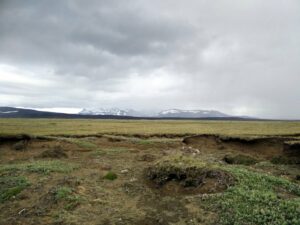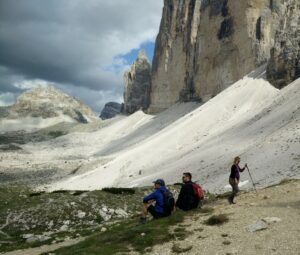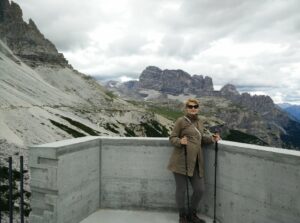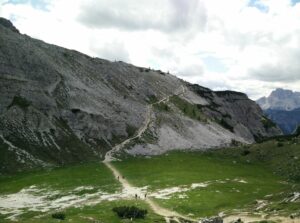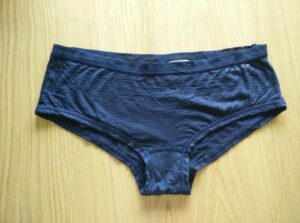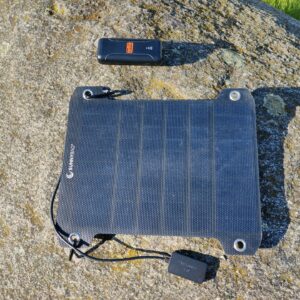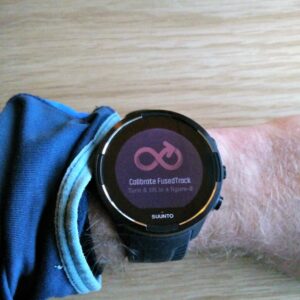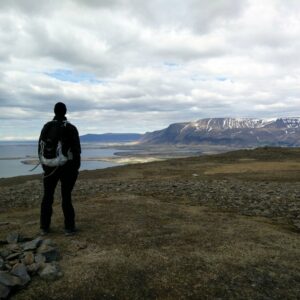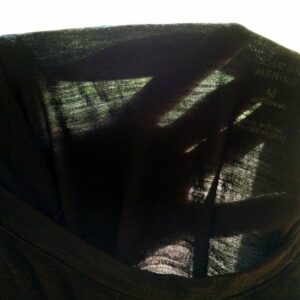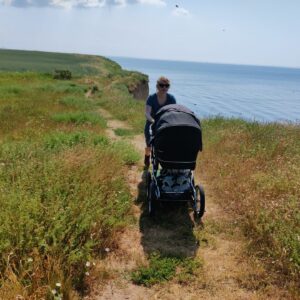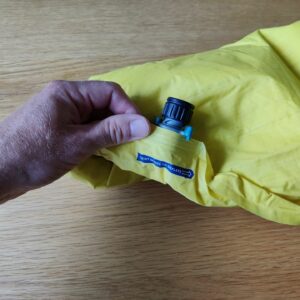Exercising moderately while pregnant is good for both you and the baby you’re carrying. Daily exercise diminishes back pain, constipation and puffiness, which can be annoying side effects of being pregnant. You should, however, avoid sports which put your stomach in risk of trauma – such as diving, skiing, show jumping, martial arts and team contact sports like football, soccer, handball etc. On the other hand, hiking is a really good choice when you’re expecting as it takes you into nature in your own pace and away from the stressing hustle and bustle of everyday life.
Still, there are some precautions that you might consider taking such as choosing less difficult trails and bringing the right equipment. Below I have listed some of the things which made hiking pregnant comfortable and enjoyable for me. It should be underlined that I have in no way been overly sporty during my pregnancy – I’m not like Alison Hargreaves who climbed the difficult Mt. Eiger (4.000 m/13.000 feet) in the Swiss Alps while six months pregnant. If you are looking for tips to undertake similar feats you will have to find them somewhere else, as the most challenging hike I executed pregnant was the Tre Cime di Lavaredo trail in the Dolomites.
Hiking Pregnant: Tips and Advice
- Choose an appropriate trail and terrain
- Set your own pace
- Use a trekking pole (or two)
- Take breaks and snacks!
- Prepare yourself to pee often
- Get comfortable underwear I: A larger bra
- Get comfortable underwear II: Quick-drying and breathable panties
Choose an appropriate trail and terrain
The worst that can happen while mountaineering or hiking pregnant is of course that you fall and injure yourself and/or the baby. Therefore, it might be a good idea to avoid the steepest and most exposed trails – not least in winter or in rainy weather. Whenever you do venture out, be sure to select your equipment with the greatest care. As an absolute minimum, you should wear proper hiking boots for anything but completely flat terrain, to ensure grip on any tricky surfaces. They will also give your ankles much needed support as they are already under pressure from the extra weight of the growing belly.
You should only undertake winter hiking, requiring crampons and ice axes, if you have solid experience with this type of hiking and the trail you are going on. I usually love scrambling but I have steered clear of such technical trails during my pregnancy. Another important aspect of choosing a suitable trail is to choose one where you have one or more opportunities to turn around and/or shorten the hike significantly if you start feeling bad or overly exhausted. When we decided to do the Tre Cime di Lavaredo, it was exactly because there were several mountain huts where I could rest and/or turn around, if needed. I do NOT recommend an otherwise flat and easy trail like the Kjolur route where you might be stuck in the uninhabited Icelandic interior for days until the next bus comes by.
Set your own pace
Quite early on in my pregnancy, I noticed that I couldn’t take as long or as fast strides as usual without getting round ligament pains around my right hip or just under my right breast. These pains are not dangerous or ominous, but related to your uterus expanding to contain the growing child, which causes a strain on the ligaments surrounding it. It is, however, painful to experience so it is important to set a pace where you can hold them off for as long as possible, if you yourself are also prone to getting such pains. Any hiking companions should be fully onboard with this and not pressure you into going faster than comfortable. I know that my boyfriend could probably do Tre Cime di Lavaredo much much faster without me, but he ended up enjoying the slower pace as it gave him time to fully take in the breathtaking surroundings.
Use a trekking pole (or two)
I must admit that I generally don’t like using trekking poles, although my boyfriend is always encouraging me to use them to delay exhaustion etc. I feel like they are inhibiting my movements when in use (plus I feel like a granny), and even when they are collapsed and attached to the backpack. When hiking alone on steep terrain, I have sometimes found and used a wooden stick for support, but that’s pretty much it.
Using a trekking pole for support and balance while hiking pregnant has, nevertheless, been great and I’m not sure I could have done Tre Cime di Lavaredo without the Montem hiking pole. For me, one works better than two because I still have a free hand to grab onto cliffs, vegetation and the occasional handrail, which just gives me a better feeling of balance.
Take breaks and snacks!
Just as important as it is to set your own pace, it is to take breaks and have a snack when needed. Depending on the length and difficulty of the trail you have taken, it might even be good idea with one longer break where you can lie down flat. I was very happy to lie down on a bench at the Drei Zinnen mountain hut for 15-20 min. on the Tre Cime di Lavaredo trail while my boyfriend was running around photographing everything, and I believe that it aided me in completing the hike without too much exhaustion and ligament pains.
Depending where you are in your pregnancy, you have probably felt how being just slightly hungry can offset an intense feeling of discomfort. Snacks are thus a necessity and if you, like me, have shifting food animosities almost from day to day due to nausea, you should pack a wider selection than usual (for example sandwiches, nuts, chocolate, crackers, fruit, vegetables etc.) so you can avoid both hunger and nausea. Also remember to drink regularly even if it makes you pee more often (see next paragraph) – both you and the baby need to stay hydrated!
Prepare yourself to pee often
In the beginning of the pregnancy you might pee more often due to the increased blood flow in and around your uterus, while your bladder later on will be challenged by the growing baby pressing against it like a squeaky toy. In both cases it leads to a lot more toilet visits which can be annoying on longer hikes where it is unlikely there will be a proper toilet every time the urge comes over you. A good tip to avoid flashing every Tom, Dick and Harry on busy trails with very little vegetation is to wear a longer rain jacket that will cover your behind. I was very grateful for carrying one in the Dolomites. Another aspect of having to go in nature is that of littering it with toilet paper. As discussed in this fun but fair essay, it really looks horrible when you see leftovers of toilet paper in and around nature. I really recommend that you read it and maybe try out some of the suggestions about peeing in the woods, such as:
- Take the used toilet paper with you until you reach a bin.
- Bury the used paper in a hole or cover it with rocks etc.
- Skip the toilet paper altogether; first, drip-dry quickly and wear a panty liner for any leftover droplets.
- Buy a female urination device so you don’t have to use toilet paper when on the go. It might be an extra relief to use one while pregnant as you don’t have to squat.
Get comfortable underwear I: A larger bra
I thought that any boob issues (growth, sore nipples etc.) would only become a concern relatively late in the pregnancy, like third trimester or so. But already a couple of months in I could not bear to wear my everyday wired bra for more than a few hours and had to replace it with a less supportive wireless triangle bra. Later in the day, also this had to be replaced with a much softer (and unsupportive) shelf bra due to sheer discomfort. It is not because my breasts grew very much (possibly not at all), but simply because the soft tissue on the rib cage underneath the breasts started following the growth of the belly.
I subsequently read somewhere that while pregnant, one should go for bras with a circumference one or two sizes larger than normal and possibly one or more cup sizes up. Indeed, it wasn’t until I wore a wireless, but lightly padded 80E bra (36DD/E) rather than my usual 70E (32DD/E) bra that I felt comfortable and even somewhat supported. I did not even consider wearing any of my sports bras for hiking, because I knew that they would feel way too restrictive. I also didn’t venture into purchasing a proper sports bra in the appropriate (larger) size, because I knew that I wouldn’t do that many demanding hikes or sporty activities during my pregnancy. If you (quite likely) are a more sporty type than me, it might, however, pay off to actually get a sports bra appropriate for your new and different body.
In any case, I recommend sizing up whether going for a medium-impact sports bra (for hiking, climbing etc.) or a high-impact sports bra (for trail running and other bouncing activities). While you’re pregnant or breastfeeding, I will always recommend comfort over support when it comes to your chest.
Get comfortable underwear II: Quick-drying and breathable panties
Pregnancy entails a whole lot of hormonal changes, which naturally also affects your vagina. One of the changes you are likely to experience is that the discharge which keeps your vagina clean, healthy and moist will be thinner and there will be more of it. Therefore, I encourage you to wear quick-drying and breathable panties, i.e. no cotton! As you can read in the article the best hiking underwear, you should instead go for mesh synthetics, Merino wool or blends of these materials. I wore a pair of cotton panties on a long hike and they ended up chafing me severely on the innermost point of my thigh due to the moist edge of the fabric which did not dry at any point. After that hike, I had to sleep with a pillow between my knees for the chafing to heal properly. Minimize the risk of chafing and discomfort by choosing better underwear than me.

